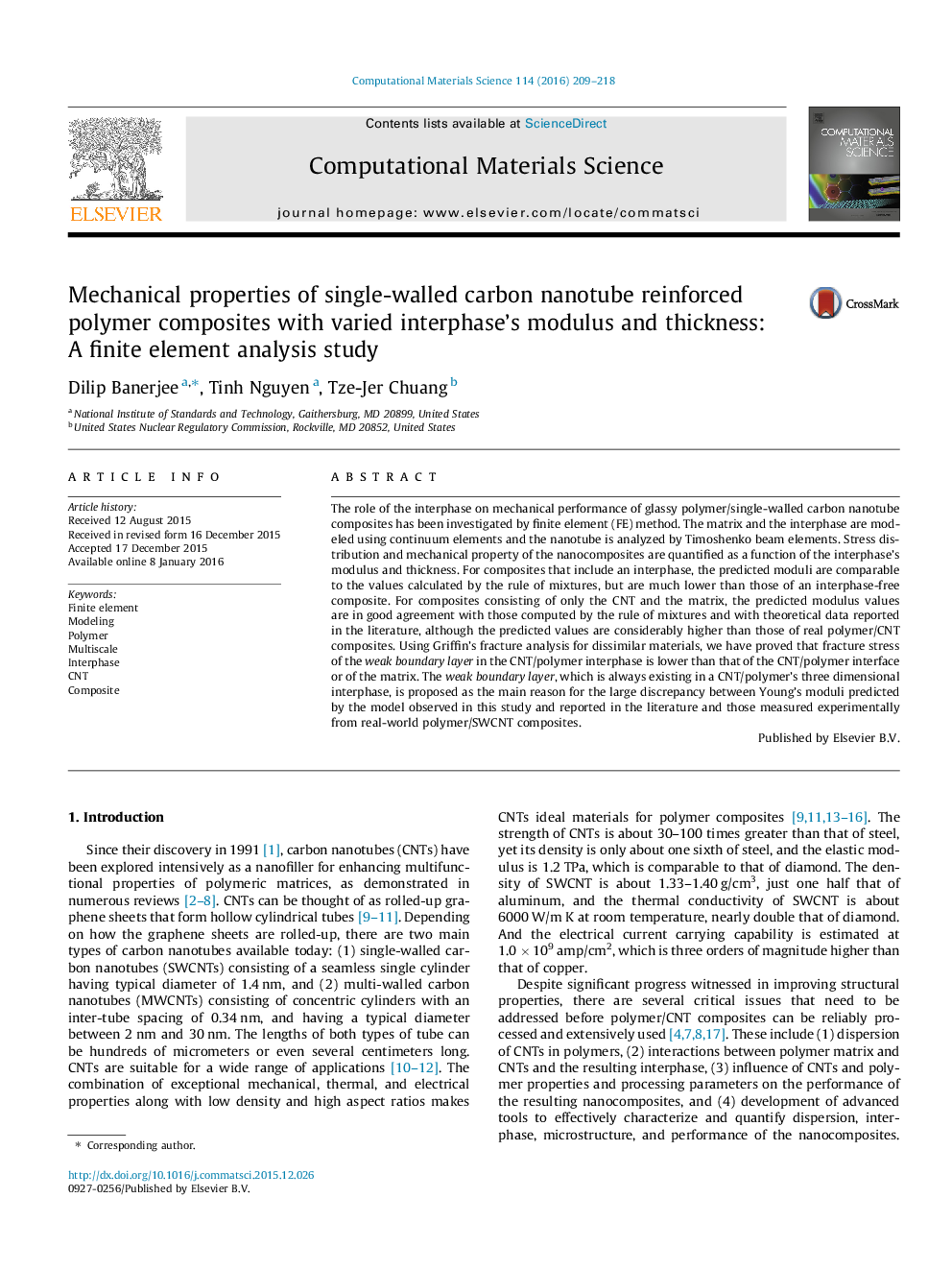| Article ID | Journal | Published Year | Pages | File Type |
|---|---|---|---|---|
| 1559922 | Computational Materials Science | 2016 | 10 Pages |
The role of the interphase on mechanical performance of glassy polymer/single-walled carbon nanotube composites has been investigated by finite element (FE) method. The matrix and the interphase are modeled using continuum elements and the nanotube is analyzed by Timoshenko beam elements. Stress distribution and mechanical property of the nanocomposites are quantified as a function of the interphase’s modulus and thickness. For composites that include an interphase, the predicted moduli are comparable to the values calculated by the rule of mixtures, but are much lower than those of an interphase-free composite. For composites consisting of only the CNT and the matrix, the predicted modulus values are in good agreement with those computed by the rule of mixtures and with theoretical data reported in the literature, although the predicted values are considerably higher than those of real polymer/CNT composites. Using Griffin’s fracture analysis for dissimilar materials, we have proved that fracture stress of the weak boundary layer in the CNT/polymer interphase is lower than that of the CNT/polymer interface or of the matrix. The weak boundary layer, which is always existing in a CNT/polymer’s three dimensional interphase, is proposed as the main reason for the large discrepancy between Young’s moduli predicted by the model observed in this study and reported in the literature and those measured experimentally from real-world polymer/SWCNT composites.
Graphical abstractA cross-section schematic of a polymer/SWCNT composite, showing the interface, interphase, and weak boundary layer (not to scale) and a corresponding finite element model.Figure optionsDownload full-size imageDownload as PowerPoint slide
